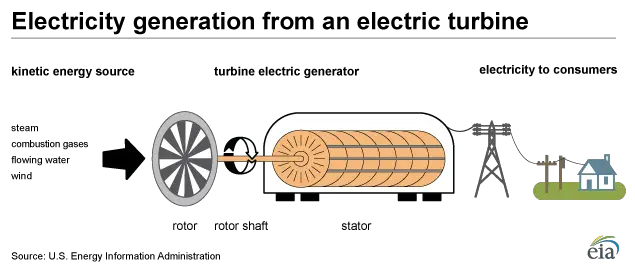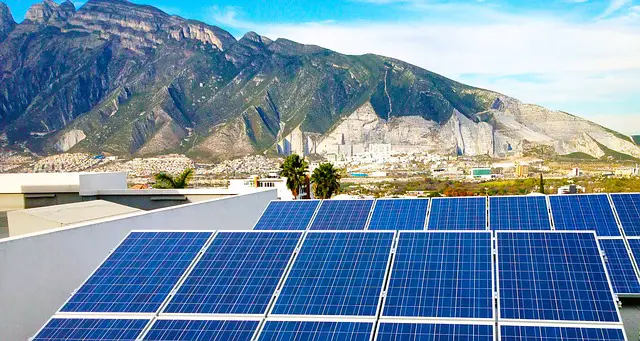Introduction to Power Generation
Power generation is the first step in the harnessing of electrical power for use in our lives. Practical power generation systems were developed a little over a century ago, and human civilization has dramatically changed as a result.
Electric power generation is the generation of electricity from various sources of energy, like fossil fuels, nuclear, solar, or wind energy.
Electric power is generated at a power plant and then transmitted, often over long distances to our homes, buildings, and businesses.
A basic understanding of how electric power is generated and transmitted is a great step toward understanding electric circuits of all types.


Electricity is generated at a power plant.
When we switch on a light or plug a device into a power outlet, we are accessing electricity that is produced at power plants.
Power generation describes how electrical power is converted from different energy sources at power plants. Understanding how we generate and transmit power helps us think about electronics and the electrical devices you probably use every day.
Electric Power Needs to Be Generated
Power generation is the act of converting different forms of energy, such as mechanical energy, or electromagnetic energy (sunlight) into electricity.

While electricity does occur naturally (lightning, for example), it would be very difficult to harvest enough electricity, with enough regularity, from natural sources alone.
According to MIT professor James Kirtley, a typical lightning strike only generates about 1/4 of a kilowatt-hour of electric power, which would be worth about 5 cents ($.05 USD).
In order to make electricity a valuable source of energy, we had to figure out ways to generate electricity in plentiful quantities, at a cost reasonable enough to be used by everyone.
The first type of technology to do this, and most successful to date, is the electric generator.
Electric Generators
Electric generators are machines that convert mechanical energy into electrical energy. Other than photovoltaic devices (solar power cells), generators are the way in which electricity is produced for mainstream power systems.
History of Electric Generators
In the last lesson, we saw that the first electric generator was called the Faraday disk, invented by Michael Faraday in 1831.
The Faraday disk was not particularly efficient or practical, but it did serve as an excellent demonstration of what could be achieved by developing advanced generation systems. The Faraday disk required manually turning a large disk in order to generate a direct current (one-directional flow of electrons through a circuit). Over next few decades, increasingly sophisticated generators were invented. Early generators produced direct current, but alternating current generators soon presented another option.
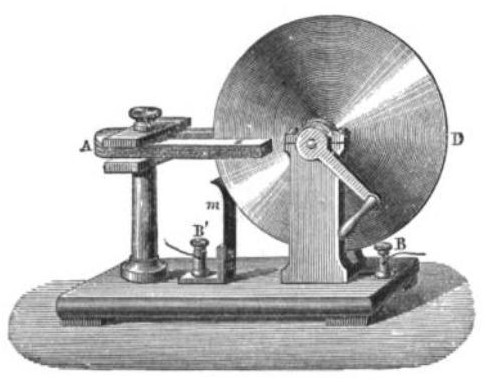
The Faraday disk was the world’s first electric generator.
At the end of the 19th century, Thomas Edison and George Westinghouse competed with each other in what is sometimes called the ‘War of the Currents’.
Edison was promoting direct current (DC) power generation, whereas Westinghouse had embraced alternating current (AC) technology. Eventually, Westinghouse’ AC systems won the ‘war’, thanks to the invention of the transformer. Transformers reduce resistive power losses so that electric power can be transmitted efficiently over long distances.
Transformers are the main reason AC generators are still used consistently around the world today.
Steam Turbines
Instead of relying on a hand-crank to turn a machine (like a Faraday disk), most generators today rely on steam turbines. Steam turbines produce the significant majority of electricity in the US (85% as of 2014).
In order for a steam turbine to function, water must be heated into a pressurized steam. This is most commonly accomplished by the combustion of fossil fuels or nuclear fission.
The turbine operates in the opposite manner of an electric fan. A turbine consists of sets of blades that turn when pressurized steam is shot through through them. As the blades spin, they turn a shaft that is connected to the rotor of an AC generator. The AC generator then turns the mechanical movement (turning) of the shaft into electricity.
Water and Wind Turbines
Generators are also used in power plants that don’t rely on steam turbines. For instance, hydroelectric plants use gravity to allow water to spin the blades of water turbines, and wind turbines are rotated by the wind. In each of these cases, an AC generator is used to convert mechanical energy into electrical energy.
Solar Energy- An Exception to the Rule
There are many ways to generate electricity, and the turbine/generator model is simply the one that has worked best to date.
One significant exception is solar power, which does not rely on a generator to produce electric power. Solar panels convert sunlight into a direct current (DC) that can then be used to charge storage devices like batteries or capacitors, or converted into an alternating current (AC) in order to be compatible with the electric grid.
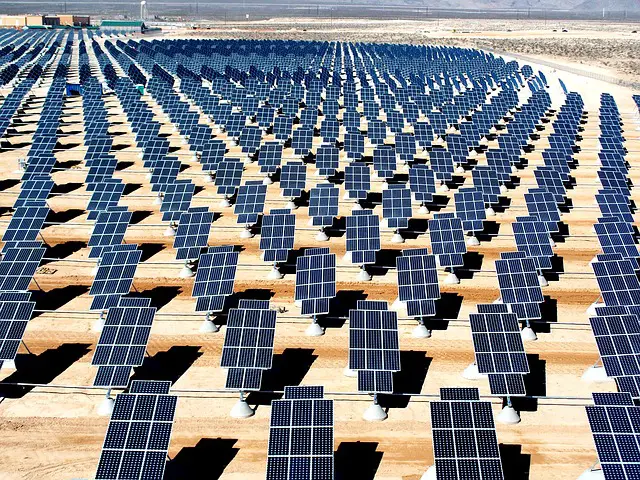
Sustainable Generation = A Healthier Planet
Hydrocarbon energy sources still provide the majority of energy around the world today. Unfortunately, hydrocarbon combustion is a major contributor to greenhouse gas emissions. According to the EIA (US Energy Information Administration), electricity generation resulted in about 1.72 billion metric tons of of carbon dioxide emission in 2019. About 99% of this carbon came from the combustion of coal, natural gas, and petroleum fuels, even though these fuels only provided 62% of the electricity generated in the US.
In the last few decades there has been a growing trend to supplement or replace these traditional energy sources with sustainable sources of electric energy such as solar, wind, or hydroelectric (water) power. Not only do these sources significantly reduce greenhouse emissions per unit of energy (kWh), they have an outsized effect on overall emissions because they have no fuel cost and are thus deployed first. This means that we gain the maximum possible benefit from sustainable energy sources.
Sustainable energy holds the promise of reduced greenhouse gas emissions and possibly lower long term cost. Thanks to efforts to promote sustainable sources, emissions from electric power generation have fallen significantly since a peak in 2007. In terms of total emissions, power generation has now been overtaken by the transportation sector.
Complicating the issue is the fact that as electric cars become more common, electric power demand will increase. In order to maximize sustainability efforts, progress is needed to ensure that this electric power will come from sustainable sources.
Electricity Demand and Generation
The need for electricity is greater than ever before. As countries around the world become more developed, their power requirements increase. According to the International Energy Agency, global demand for electricity is expected to increase by around 2.1% every year until 2040.
Power generation accordingly increases over time, particularly in the countries that are becoming more developed. The following chart shows a long term trend of power generation around the world. Since 1980, total worldwide generation has grown by about 3x.
Power, Voltage, and Current
On the one hand, when we generate electricity we call it power generation. On the other hand, you might know that most power comes in the form of a specific voltage.
For instance in the US, the standard is 120 Volt power. Most of the world uses 230 Volt power. One isn’t necessarily better than the other, as any electrical system can be designed for either.
Complicating the picture further is electric current. For example you may know that your home is rated for a certain amount of current, typically 100 to 200 amps.
So what is the relationship between power, voltage, and current?
There is a simple formula that relates these three quantities:
power (in watts) = voltage (in volts) x current (in amps)
Generators produce electric current at a specific, standardized voltage (like 120V or 230V). Collectively, all of the generators connected to the grid produce this same voltage while contributing to the available current.
The devices that you use determine the current supplied to them. The more devices you use, the more current is needed and therefore more power used.
The actual power supplied to any customer therefore depends on how much electricity they use.
How Power Plants Generate Electricity
Our journey begins at a power station, where electricity is generated using either fossil fuels or clean energy sources. Fossil fuels include coal, oil, or natural gas. Clean energy sources include nuclear power, solar, wind, hydroelectric, and geothermal.
Each type of energy source generates electric power in a different way, although some are very similar.
Here’s a brief description of each energy source to help you understand how these technologies compare. You’ll notice that most of them use a turbine connected to a generator.
Fossil Fuel
Fossil fuels include coal, natural gas, and oil and are also known as hydrocarbons. They are formed by the slow decomposition of organic molecules in the earth. These fuels are then burned in order to heat water into steam. You might use a natural gas, coal, or heating oil system to heat your home.
Fossil fuel power plants do the same thing but on a larger scale. Then they use the heated water in the form of steam to drive a turbine. Steam is then used to drive turbines- steam is pushed through the turbine blades which causes it to turn. The turbine then converts the mechanical energy of turning into electrical (AC) energy. We’ll learn more about AC and DC in later modules.
Animation of a coal-fired power station
Contrary to popular belief, a properly designed fossil fuel system will not release toxins into the air. An ideal combustion process releases only water (H2O) and carbon dioxide (CO2). However, CO2 is the most long-lived greenhouse gas and its’ growing concentration in the atmosphere has been associated with global warming.
Nuclear
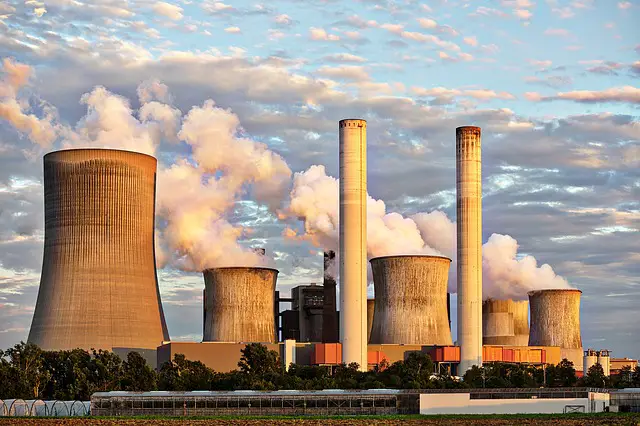
Hyperbolic shaped cooling towers are common at nuclear power plants because they are much stronger than ‘straight walled’ buildings.
Nuclear power uses nuclear energy to generate heat, which is then used to turn water into steam. The rest of the process is similar to that of fossil fuels, with the steam then being used to power turbines in order to drive electric generators.
Major accidents at power plants like Chernobyl, Three Mile Island, and Fukushima Daichi have resulted in significant pressure to reduce nuclear power usage. As a result, there has been a long term debate about the future of nuclear power. One interesting factor is the future potential for fusion reactors, which could produce lower cost energy and operate far more safely with less risk than the current fission reactors.
Solar
Solar power uses sunlight to produce electricity by interacting with the electrons in solar panels. Panels are composed of photovoltaic (PV) cells that rely on the photoelectric effect to generate voltage. There are many advantages to solar power. Most solar panels are comprised of polycrystalline silicon, which is a fairly cheap material. Silicon is the most abundant element in the earth’s crust. In addition, many other forms of electric power are actually already converted solar power. For instance, fossil fuels are formed by the decay of photosynthetic organisms. Solar energy causes air pressure differentials, resulting in wind which can then be harvested. The price of solar cells has steadily decreased for decades as efficiency has increased, so we can expect to see more usage of solar power over time.
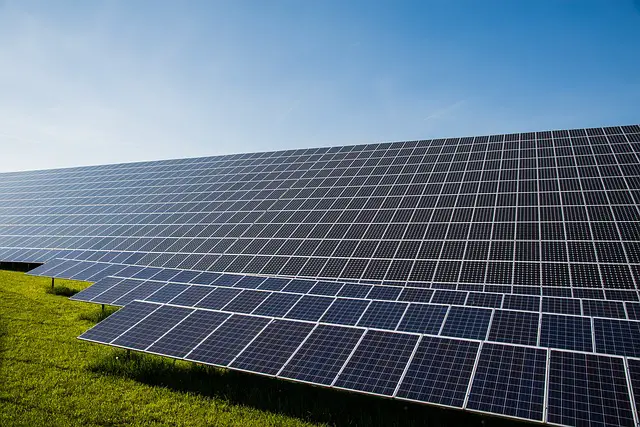
Wind
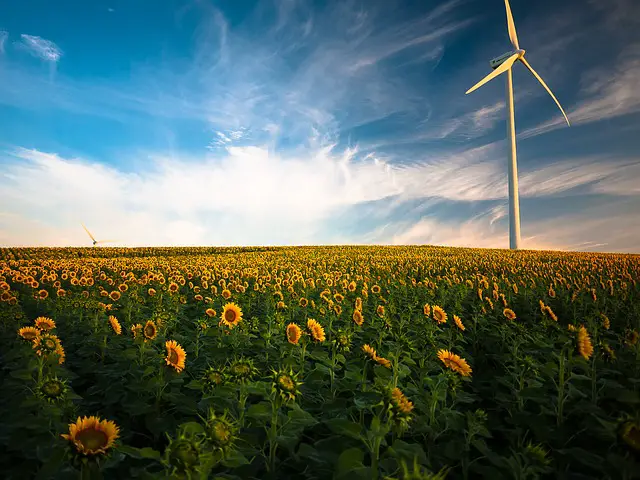
A wind turbine is the modern version of a windmill.
Wind power uses the wind to rotate the blades of a wind turbine, which is connected to an electric generator. The rotation of the turbine blades allows the generator to produce electricity as the blades turn, converting mechanical energy into electrical energy. Wind has been used as a source of power for many centuries in the form of windmills. Modern wind turbines are simply a new version of a classical power source. One of the biggest challenges faces by wind power is the irregularity of wind. They also occupy large spaces and contribute to ‘industrialization’ of rural areas.
Public opinion on wind power tends to be cultural, with some countries showing overwhelming support and others reluctant to encourage further adoption.
Hydroelectric
Hydroelectric, or hydropower, uses the energy of falling water in order to generate electricity. The water is channeled through a water turbine connected to a generator, which produces electricity as the water pushes the turbine blades. Hydroelectric power accounts for about 70% of the world’s renewable electricity and is expected to grow. In terms of cost and sustainability, hydroelectric power seems like the perfect solution. Once built, a dam consumes no water, has very low greenhouse gas emission, and produces energy very cheaply. However, they considerably alter ecosystems around them. Ecosystems both upstream and downstream of the dam can suffer due to their altered conditions. Dam construction projects can also result in the controversial displacement of human settlements in the area.
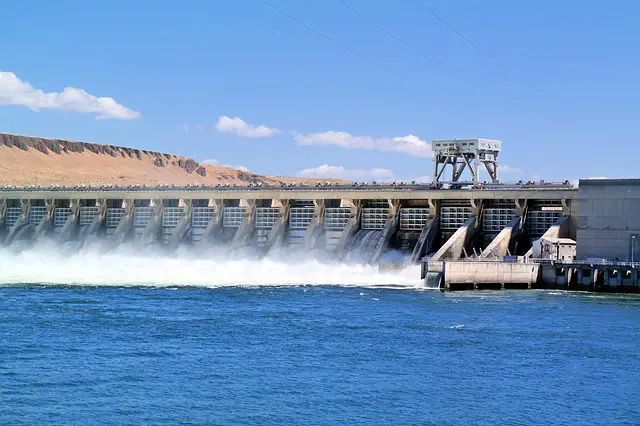
Hydroelectric dams are currently the greatest source of renewable electricity.
Geothermal
This type of power uses the heat within the earth to turn water into steam and, once again, power a steam turbine. The hot water is then injected back into the earth. Interestingly, the primary heat source inside the earth’s crust is decaying radioactive matter. In this way, geothermal power is similar to nuclear power. Geothermal power has been increasingly adopted because it is sustainable, renewable, and does not fluctuate much. Greenhouse gas emissions are very low, but geothermal plants can release unwanted chemicals from the earth’s crust. These chemicals can then be captured or injected back into the earth, but the drawing and injection process as a whole can cause land stability issues.
A similar but related technology is geothermal heating. Instead of heating water in order to drive a steam turbine, geothermal heating uses the hot water to heat a home or building. The most common form of geothermal heating uses a heat pump. Heat pumps allow us to obtain heat trapped just below the earth’s surface, even in cold climates. This is due to the fact that the temperature beneath the top 20 feet (6 meters) of the earth’s surface tends to maintain the average annual temperature of the air at the surface. During the winter, the earth is far warmer 20 feet down than it is at the surface.
The Power Grid
Now that you have a general idea of how power is produced, let’s take a look at how electric power gets to your home or business. There is an entire interconnected system of power plants, substations, transmission lines, and distribution lines that work together to supply electricity to residential, industrial, and commercial customers. Let’s see how this happens.
As we discussed, the power produced for a customer is conditioned so that it is a specific voltage. So you might think that it makes sense just to produce a voltage that would work for everyone. Unfortunately as electricity flows through a wire, some energy is lost as heat. It turns out that really HIGH voltages are great for preventing thermal losses.
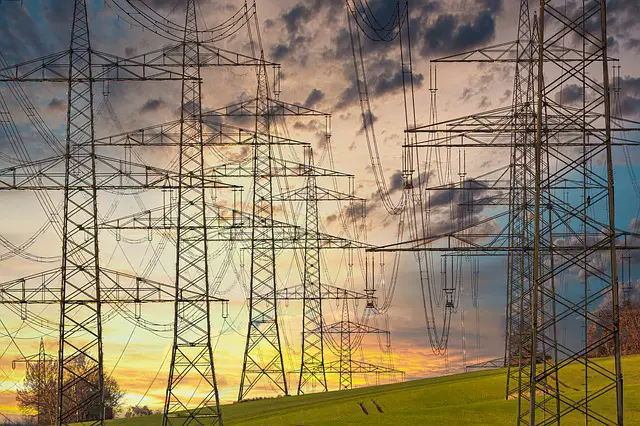
Transmission lines are used to transmit electricity from power plants to customers.
Also, some industrial customers want voltages that are much higher than what residential customers need in their house. So engineers invented a multistep process to maximize efficiency and reduce losses.
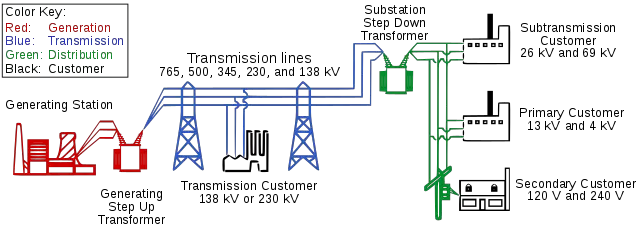
1) Electricity is generated at the power plant. The actual voltage generated depends on the plant and is optimized for things like the type of power plant and their generation patterns.
2) The voltage produced at the power plant is transmitted to a step-up transmission substation that uses transformers to convert the voltage from the power plant to a really high voltage. This is usually a standardized voltage that allows the plant to connect to the power grid.
3) The high voltage electricity is then transmitted long distance through power transmission lines.
4) The power is distributed to a network of step-down substations, which use transformers to step the voltage down to the required level (120 Volts in the US, 230 Volts in most of the world). As mentioned, some customers require much higher voltages and may be served by their own substation.
Note: Transformers are simple devices that can take one voltage input and produce a different voltage output. We’ll cover them in much greater detail in our Module on AC circuits.
5) The electricity is then transmitted across distribution lines to the customer. When you plug a toaster into the wall, or turn on the light, you are tapping into a huge network of electrical circuits connecting your house all the way back to the power stations…remember those?
Along the way, the power is split up in order to serve different areas and customers using switchgear. Switchgear is consists of switches and breakers and is not so different from the breaker box that you probably have in your home, except commercial switchgear is much larger and often vacuum sealed to prevent arcing.
Now that we have an understanding of how electricity is generated and transmitted to our homes, let’s dive into the science behind electricity, starting with:
Lesson 4: Of Atoms and Electrons
